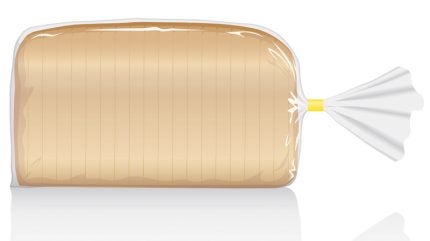
Clear plastic film has become an indispensable material in modern packaging. From wrapping fresh produce and baked goods to protecting electronics and medical supplies, its widespread use spans countless industries.
Its popularity lies in its versatility, cost-efficiency, and ability to showcase products while keeping them safe.

Discover B2B Marketing That Performs
Combine business intelligence and editorial excellence to reach engaged professionals across 36 leading media platforms.
Yet, in an era increasingly focused on sustainability and environmental impact, the role of clear plastic film in packaging is undergoing scrutiny and transformation.
Why clear plastic film is widely used in packaging
Clear plastic film is primarily made from polymers such as polyethylene (PE), polypropylene (PP), and polyethylene terephthalate (PET). These materials offer excellent barrier properties, helping preserve food freshness, prevent contamination, and extend shelf life.
Transparency is another major advantage—it allows consumers to visually inspect products without opening the packaging, a factor that can influence buying decisions.
For manufacturers and retailers, clear film is lightweight and cost-effective. It reduces shipping weight, improves fuel efficiency in transportation, and lowers carbon emissions compared to heavier packaging options.

US Tariffs are shifting - will you react or anticipate?
Don’t let policy changes catch you off guard. Stay proactive with real-time data and expert analysis.
By GlobalDataMoreover, the material can be engineered for various levels of thickness, strength, and flexibility, enabling tailored solutions for different applications.
One major innovation is multi-layer plastic film, which combines several polymer layers to enhance performance. For instance, a film might include an oxygen barrier layer for food preservation and a heat-sealable outer layer for packaging convenience.
This adaptability has helped clear plastic film dominate the flexible packaging market, especially in fast-moving consumer goods (FMCG) sectors.
Environmental impact and recycling challenges
Despite its functional benefits, clear plastic film has significant environmental drawbacks.
The majority of plastic film is single-use and difficult to recycle. Thin, flexible plastics can clog recycling machinery and are often contaminated with food or other substances, making them unsuitable for conventional recycling streams.
In the UK, only a small percentage of plastic film is currently recycled. Most ends up in landfill or is incinerated, contributing to greenhouse gas emissions and pollution. This issue has spurred increased regulation and consumer demand for more eco-friendly packaging options.
Retailers and manufacturers are responding with initiatives to improve recyclability. Supermarkets now offer collection points for soft plastics, and packaging designers are exploring mono-material films—those made from a single type of polymer—to simplify recycling.
Some brands are shifting towards compostable films made from plant-based sources like starch, cellulose, or polylactic acid (PLA). While these offer promise, compostable plastics still face challenges in terms of performance, shelf life, and the availability of industrial composting facilities.
Another key development is the introduction of recycled content into clear plastic films.
Advances in mechanical and chemical recycling are making it possible to reprocess post-consumer plastic into new packaging films, reducing reliance on virgin plastic and closing the loop in the packaging lifecycle.
Future trends in clear plastic film packaging
As sustainability becomes central to packaging strategies, innovation in clear plastic film is accelerating. Researchers and manufacturers are investing in new technologies to improve the environmental profile of flexible packaging without compromising functionality.
One promising area is biodegradable plastic film. Unlike compostable plastics, which require specific industrial conditions, biodegradable films are designed to break down more easily in natural environments.
However, ensuring that these materials degrade safely and do not leave microplastics behind remains a significant scientific and regulatory hurdle.
Smart packaging is another trend shaping the future. Transparent films embedded with sensors or indicators can provide real-time information about food freshness, temperature changes, or package tampering.
These innovations enhance consumer confidence and can help reduce food waste, aligning with broader environmental goals.
Moreover, regulatory frameworks are shifting. The UK’s Plastic Packaging Tax and upcoming Extended Producer Responsibility (EPR) schemes are pushing companies to rethink packaging materials and formats.
Brands that adopt recyclable or reusable films early are likely to benefit from regulatory incentives and stronger consumer trust.
Retailers are also embracing minimal packaging designs, where clear plastic film is used sparingly or in conjunction with recyclable paper-based materials. This hybrid approach retains the benefits of visibility and protection while reducing overall plastic use.
Looking ahead
Clear plastic film in packaging continues to be a cornerstone of product protection and presentation. While its environmental impact has rightly prompted concern, the industry is actively seeking sustainable alternatives and smarter designs.
As innovation accelerates and regulations evolve, the future of clear plastic film will likely be defined by how effectively it balances functionality with environmental responsibility.





